Recent Articles
Popular Makes
Body Types
2024 Hyundai Santa Fe Road Test and Review
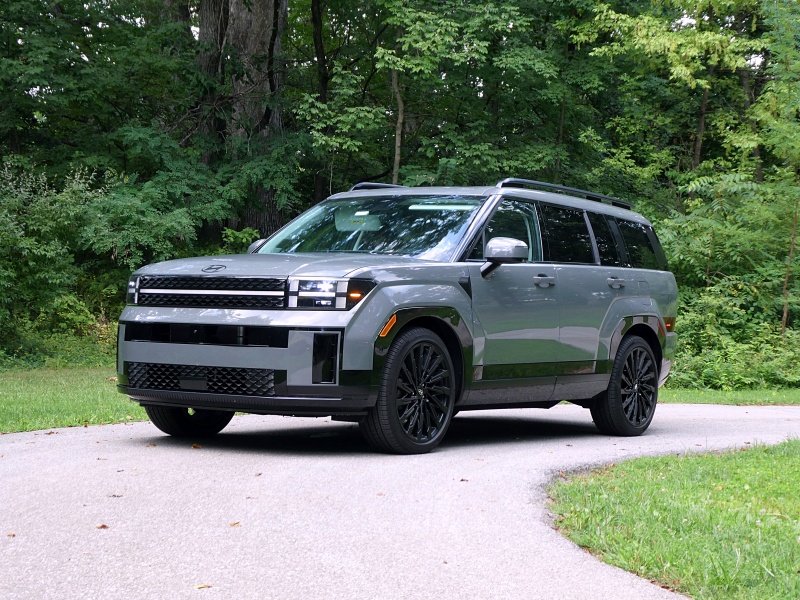
2024 Hyundai Santa Fe Calligraphy ・ Photo by Brady Holt
Few cars have changed more in the past 20 years than the Hyundai Santa Fe. If you’re a prior owner, it may be hard to keep track. First the Santa Fe was a basic compact crossover. Then it became half a size larger. Next it was a three-row mid-size crossover, with the Hyundai Santa Fe Sport taking over between the compact and mid-size classes. Then, a few years ago, Hyundai dropped the Sport and put the Santa Fe back in that old segment.
This is all to say that you won’t learn much from the name of the fully redesigned 2024 Hyundai Santa Fe. But Hyundai has given you a lot of reason to figure out what’s going on with this model. The new Santa Fe has head-turning boxy looks and a swanky new interior, grows just enough to fit a third-row seat again, has a choice of gasoline and hybrid powertrains, and starts at $33,950. We just spent a week testing the 2024 Santa Fe to figure out who should buy this new model – and our conclusion is that it boasts broad appeal. Keep reading to learn more about its pros and cons and to see if it’s the right mid-size crossover for you.
Boxy New Look
Fittingly for its latest evolution, the new 2024 Santa Fe looks nothing like its predecessors. It drops its predecessor’s generic roundness in favor of dramatic boxiness with sharp corners, pronounced fender flares, rectangular windows, a vertical rear end, and a low rectangular lightbar spanning the rear of the vehicle.
This boxiness isn’t just for show. As we’ll discuss, it gives the Santa Fe more interior room than before. It grows just 2 inches longer than the old model – to 190 inches. But those inches plus the new shape put it firmly in the three-row mid-size crossover class, albeit at the small end of that sector. The new look will be polarizing; we’ve read about some folks loving it and others hating it. That applies to everything from the overall shape to the “H” patterns built into the headlights and taillights. The latter isn’t useful, but anyone can appreciate the utility of the Santa Fe’s boxier shape.
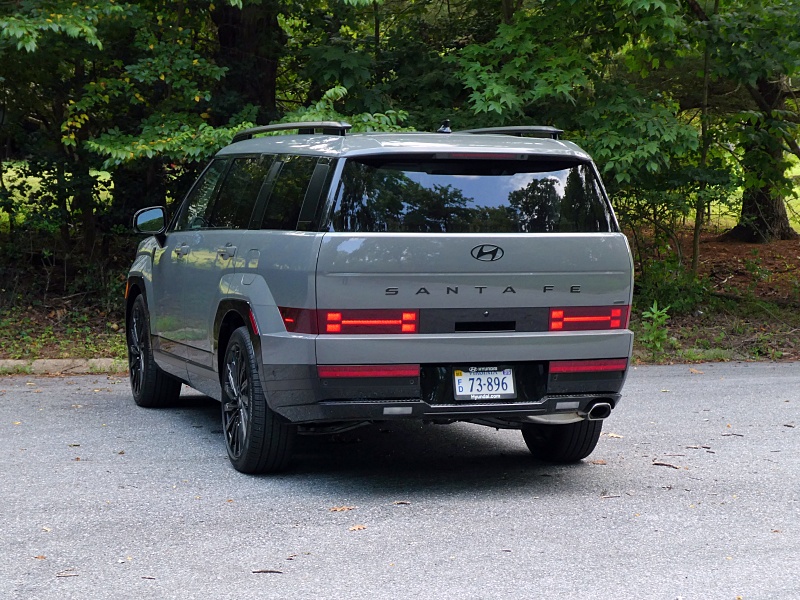
2024 Hyundai Santa Fe ・ Photo by Brady Holt
Lavish Yet Functional Cabin
Inside, the new Santa Fe has a dashboard worthy of a luxury car, with top-notch materials and solid-feeling moving parts. The 12.3-inch infotainment touchscreen connects across a single panel to the digital gauge cluster. This design fits seamlessly into a proudly rectangular that looks like something out of a Range Rover – particularly with our top-trim Calligraphy test vehicle’s white leather upholstery on the seats, dash, and door panels. Yet Hyundai doesn’t forget about the functionality folks are looking for on an everyday SUV, either. Most controls are easy to use, with simple buttons and knobs for common functions. And ample storage spaces include generously sized front cupholders, and multiple bins, cubbies, and crevices where you can stash your stuff.
We have only a few quibbles. It’s fussy to see information about the song playing on the radio. You need to take several steps and fill the whole big screen with the radio info – and even then, the song name is squeezed into a corner. And some of the climate controls are too tightly clustered for you to easily tap what you want. But overall, the Santa Fe is simultaneously stylish, high-tech, functional, and magnificently built.
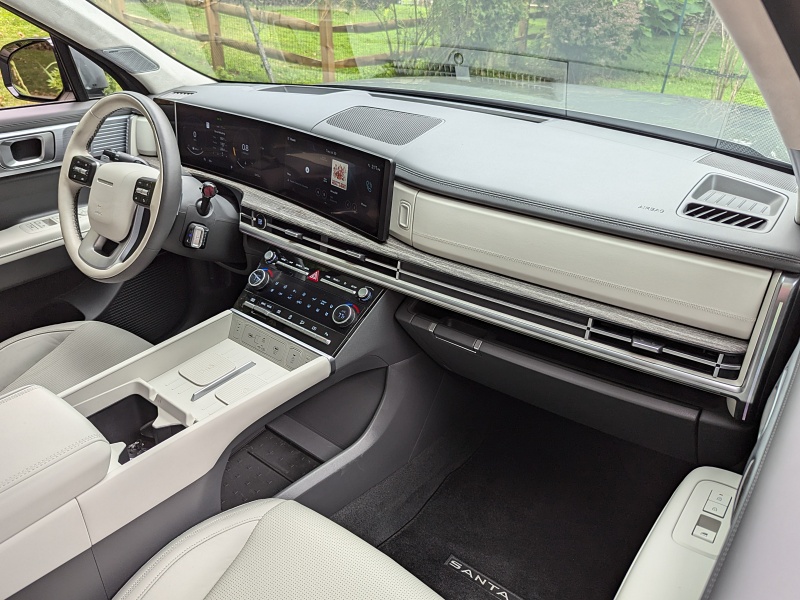
2024 Hyundai Santa Fe Calligraphy ・ Photo by Brady Holt
Now With Three Rows of Seats
We mentioned how the Santa Fe has changed a lot over the years. These days, it’s a small mid-size crossover – a Hyundai Palisade is 7 inches longer and 3 inches wider – with a small third-row seat.
The Santa Fe has two very comfortable rows. Most trim levels have a three-passenger bench seat with ample legroom and headroom, and we expect most owners will keep the third row folded down most of the time. The Santa Fe’s mechanical twin, the Kia Sorento, has captain’s chairs on most models; this provides easier third-row access but cuts the passenger capacity to four with the third row folded (and six with it in use). The top Santa Fe Calligraphy, like our test vehicle, does take that same approach.
The Santa Fe’s third row is usable in a pinch. An agile adult can squeeze back there, especially if second-row passengers give up a bit of their own legroom. It’s not something you’d pick for a long road trip, but if you appreciate the flexibility of seven-passenger seating without the extra bulk of a Palisade, you’ll welcome this feature.
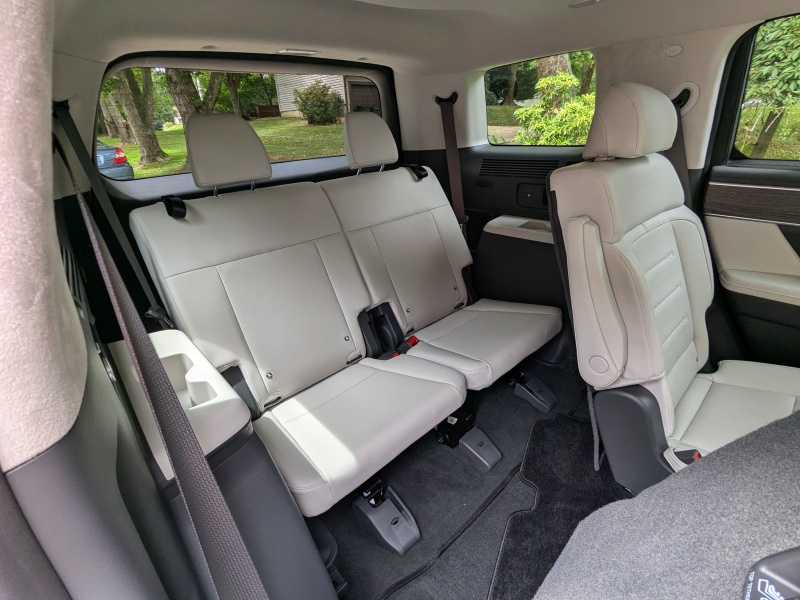
2024 Hyundai Santa Fe Calligraphy ・ Photo by Brady Holt
A Roomy Cargo Hold, Too
As we mentioned, most Santa Fe owners will likely keep their third-row seats folded down. That’s because there’s a fairly modest 14.6 cubic feet of space back there. The Santa Fe’s upright rear end makes the most of that space (the curvier Sorento has just 12.6 cubic feet), but you’ll fold it down for more than a bit of groceries or a couple small suitcases.
When you do fold down the third row, you get 40.5 cubic feet behind the second row and 79.6 cubic feet behind the front seats. That’s smaller than most three-row crossovers, but it’s more than you’d find in a two-row mid-size SUV like the Subaru Outback, Chevrolet Blazer, Jeep Grand Cherokee, Nissan Murano, or Ford Edge. The Santa Fe can tow up to 4,500 pounds in its XRT trim level, a little below average for a mid-size crossover, and most trim levels top out at 3,500 pounds. And the gas-electric Santa Fe Hybrid tows just 2,000 pounds.
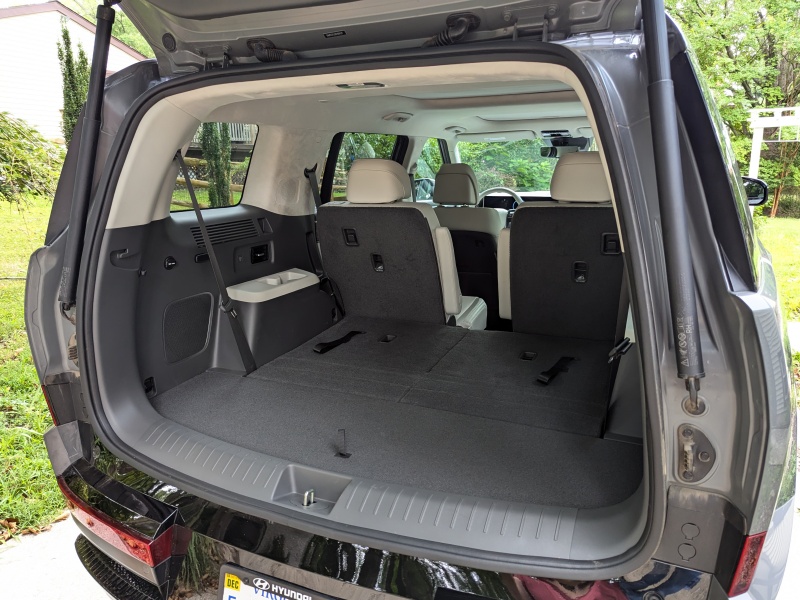
2024 Hyundai Santa Fe Calligraphy ・ Photo by Brady Holt
Standard Turbo, Available Hybrid
Last year’s Santa Fe came standard with a modestly powerful non-turbo four-cylinder engine, which remains the base motor on the Kia Sorento. This year, though, every trim level comes standard with a 2.5-liter turbo four that makes a lively 277 hp and 311 lb-ft of torque. That’s more pep than you’ll get from many larger three-row crossovers. The eight-speed dual-clutch automatic transmission doesn’t shift as smoothly as the best conventional automatic, but it improves the powertrain’s efficiency. The EPA pegs the Santa Fe at an excellent 20 mpg in the city, 29 mpg on the highway, and 24 mpg combined with front-wheel drive; 20 mpg city, 28 mpg highway, and 23 mpg combined with AWD; and about 1 mpg less on the AWD-only XRT model. Our AWD test vehicle hit the EPA’s 23-mpg estimate.
The Santa Fe Hybrid is potentially even more appealing. It’s down a bit of power – 231 hp and 271 lb-ft of torque from a 1.6-liter turbo gas engine paired with an electric motor. But that’s still decent pep for this size of SUV. More important, fuel efficiency improves to 36 mpg city, 35 mpg highway, and 36 mpg combined with front-wheel drive and 35 mpg city, 34 mpg highway, and 34 mpg combined with AWD. That’s a particularly dramatic difference if you often drive at low speeds or in stop-and-go traffic. And the Santa Fe Hybrid costs just a few hundred dollars more than an equivalent gas-only model (though it has a smaller lineup to choose from). A plug-in hybrid model is no longer available.
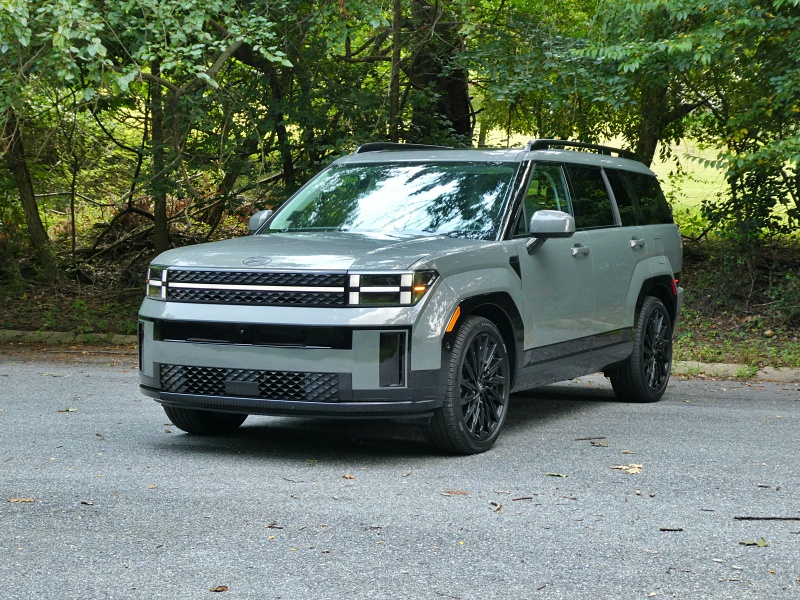
2024 Hyundai Santa Fe Calligraphy ・ Photo by Brady Holt
Drives Like It’s Expensive
We’ve mentioned that the Santa Fe is smaller than most three-row crossovers. That helps it feel more agile and responsive when you tackle a winding road. The steering is firm and quick without feeling too heavy or darty, and the composed suspension inspires confidence at speed – and helps make the Santa Fe feel expensive. The 38-foot turning circle is also pretty good for a mid-size SUV, making the Santa Fe relatively easy to park.
Our Santa Fe Calligraphy test vehicle’s big 21-inch wheels make the ride a bit bumpy, but it’s not terrible. And most trim levels offer more modest 18-inchers. Also, Hyundai keeps extra noise out of the cabin for an overall vibe of hushed refinement.
The XRT model promises a bit of extra off-road capability, with 8.3 inches of ground clearance (versus the standard 7 inches), all-terrain tires, a revised traction-control system, and an enhanced cooling system (which is why it can also tow more). It won’t tackle a Jeep trail, but it’s the best Santa Fe for snow or muddy unpaved roads.
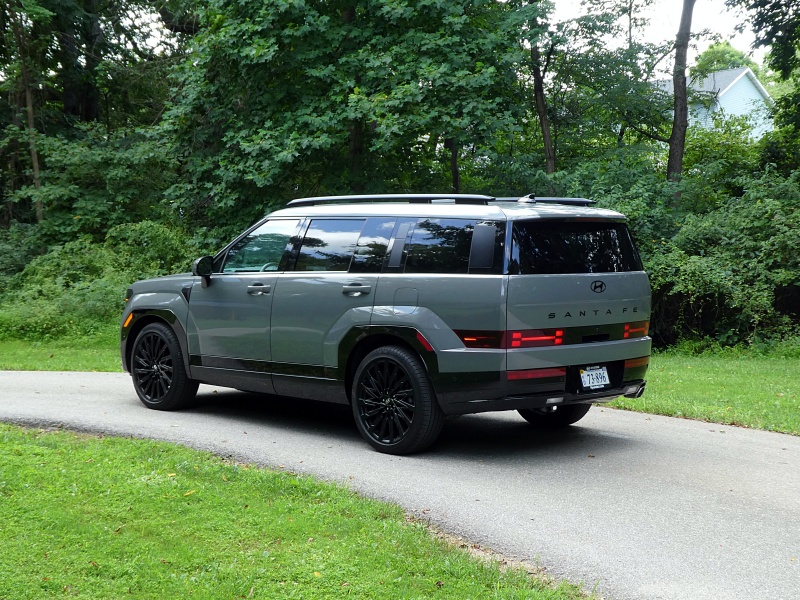
2024 Hyundai Santa Fe Calligraphy ・ Photo by Brady Holt
Three-Row Affordability
With a starting price of $33,950, the 2024 Hyundai Santa Fe is one of the least expensive three-row crossovers in America. And that’s not because Hyundai stripped out features, either. Even the base SE has the powerful turbo engine, the big 12.3-inch screen, push-button starting, a power liftgate, and a full suite of advanced safety features that include blind-spot monitoring, adaptive cruise control, and lane-keeping steering assistance. AWD costs $1,800 extra.
For another $2,500, the $36,450 SEL swaps cloth upholstery for heated leatherette with a power driver’s seat, along with wireless smartphone charging, dual-zone automatic climate control, and the ability to unlock and drive the car with your phone. The XRT, $40,600 with AWD standard, adds the off-road upgrades plus a sunroof and GPS navigation. The Limited has genuine leather, a heated steering wheel, ventilated front seats, heated rear seats, rear sunshades, a panoramic sunroof, a 12-speaker Bose stereo, rain-sensing windshield wipers, a surround-view parking camera, and a blind-spot camera that activates when you change lanes. For $43,350, this model has as many amenities as some three-row crossovers costing $10,000 more. The Calligraphy, $46,500, goes all out with Nappa leather, a suede headliner, power-folding second-row seats, and a second wireless charger. The SEL, Limited, and Calligraphy offer the hybrid powertrain as well.
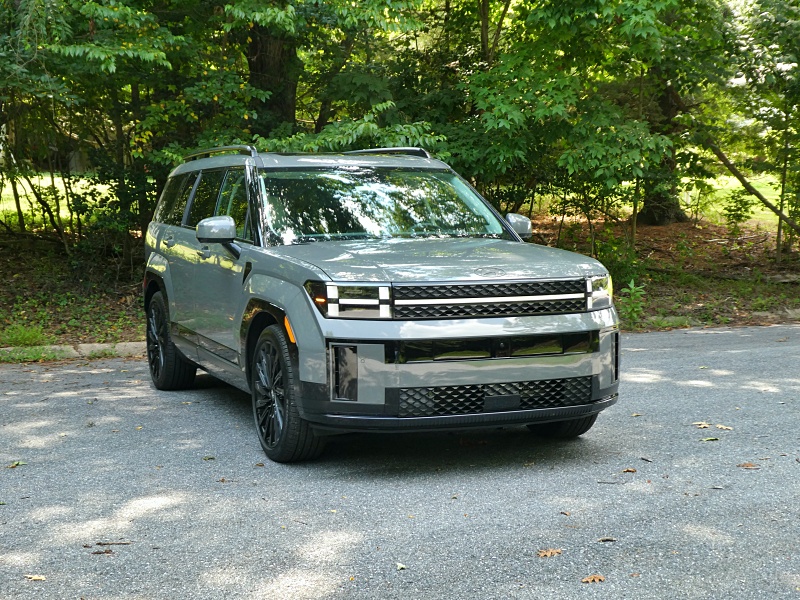
2024 Hyundai Santa Fe Calligraphy ・ Photo by Brady Holt
Competitors to Consider
If you’re interested in a three-row crossover without the usual bulkiness and high price, your other leading choice is the Santa Fe’s corporate cousin – the Kia Sorento. The Sorento isn’t as opulent as the Santa Fe, doesn’t look as distinctive, has a little less cargo room, and has a weaker base engine. And as we mentioned, most of its trim levels seat just six people instead of seven. On the other hand, the Kia costs several thousand dollars less than the Santa Fe, and it’s still available with a plug-in hybrid.
When you’re most focused on luxury, another winner is the Mazda CX-90. It costs a little more than the Sorento, it doesn’t have the same boxy-functionality aesthetic, and its infotainment technology is behind the times. But it’s a delight to drive, it’s beautifully finished, and its prices are reasonable. It has a choice of a six-cylinder gas engine or a plug-in hybrid four-cylinder. The Toyota Highlander, meanwhile, is a leading rival among less-bulky three-row SUVs. We much prefer the Santa Fe, which costs much less while feeling like it costs much more. Toyota loyalists will pin their hopes on the Highlander lasting longer, but it’ll take years to find out if the brand reputation also applies to the current-model Highlander.
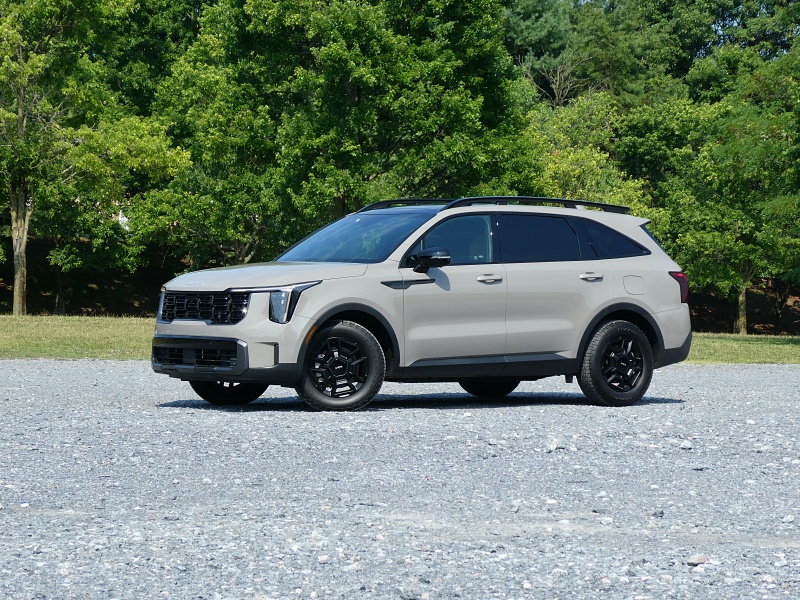
2024 Kia Sorento X-Pro SX Prestige ・ Photo by Brady Holt
Luxury Meets Affordability Meets Functionality
The 2024 Hyundai Santa Fe is positioned to delight a wide variety of potential customers. These include families who want an affordable three-row crossover – especially those who prefer value and easy parking over maximum interior volume; anyone who appreciates a premium luxury experience on a mainstream budget, third row or otherwise; and, on the hybrid, anyone looking for a spacious yet economical commuter car.
Some folks will want something bigger or something that looks different. But it should hit the spot for many others. Comfortable, quiet, beautifully finished, and packed with features for the money, the Santa Fe has plenty of reasons to attract attention beyond just its styling.
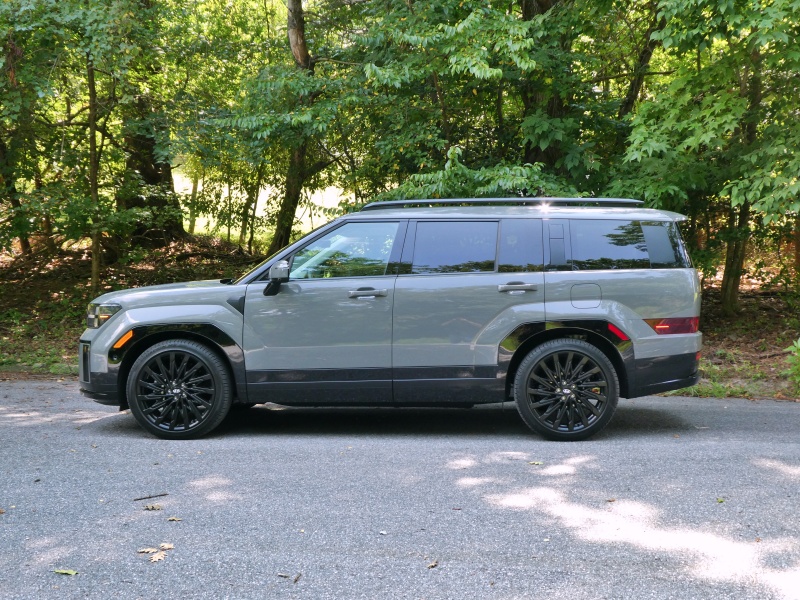
2024 Hyundai Santa Fe Calligraphy ・ Photo by Brady Holt